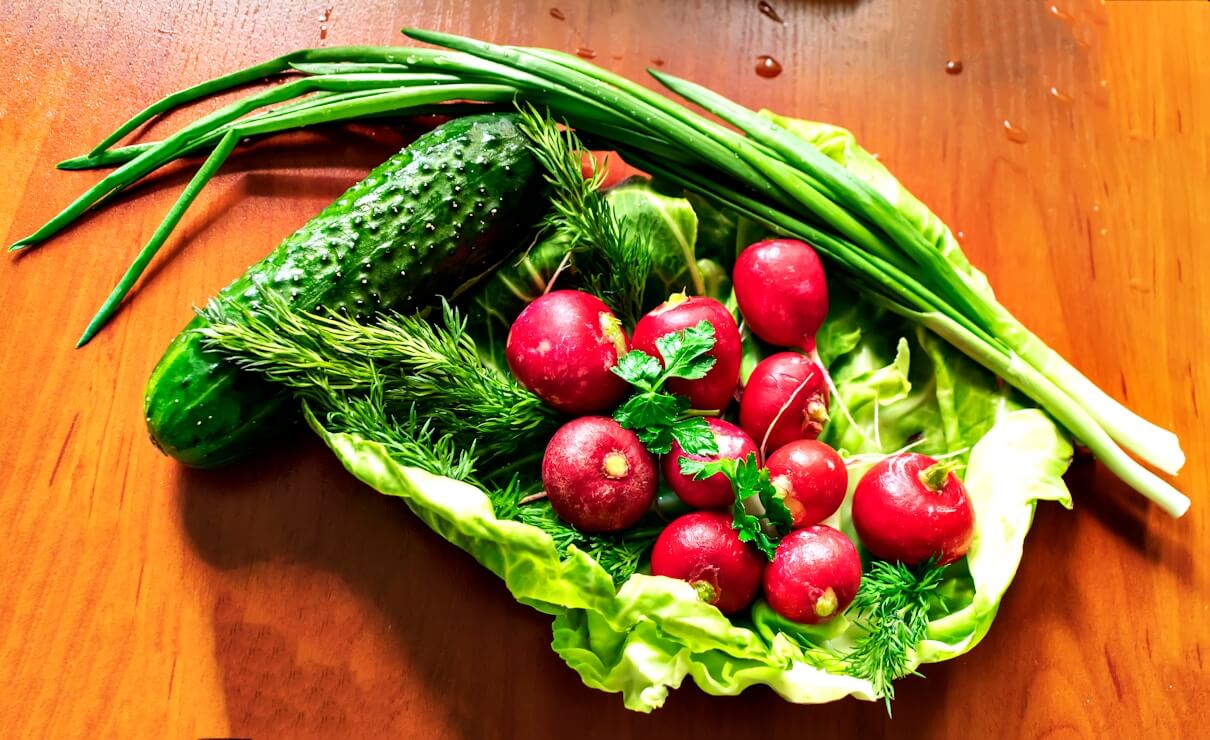Have you ever wanted to make your own shelf-stable, nutritious snacks or ingredients for soups, stews, or trail mixes? Dehydrated vegetables are your answer!
This simple kitchen technique takes your favorite veggies and transforms them into lightweight, long-lasting ingredients while locking in flavor and nutrients. Whether you’re a backpacker, a busy parent, or just love a handy snack, learning how to dehydrate vegetables at home is a game-changer.
In this post, I’ll share my tried-and-true method for dehydrating vegetables—perfect for beginners or anyone looking to up their meal-prep game. We’ll cover everything from choosing the best veggies, prepping and seasoning, to storing your finished product safely.
Along the way, you’ll find expert tips and creative variations, plus some delicious ways to use your dehydrated bounty (hello, instant veggie soup!). Get ready to unlock a whole new world of healthy homemade goodness!
Why You’ll Love This Recipe
- Versatile: Dehydrated vegetables can be used in soups, stews, casseroles, or as crunchy snacks.
- Healthy & Nutritious: Drying preserves most nutrients and intensifies the natural flavors—no preservatives needed!
- Budget-Friendly: Buy veggies in bulk or use garden surplus to save money and reduce waste.
- Convenient Storage: Dehydrated veggies are lightweight and shelf-stable for months.
- Customizable: Mix and match your favorite vegetable combos and seasonings.
- Perfect for Meal Prep & Emergencies: Always have healthy ingredients ready, whether at home or on the go.
Ingredients
| Vegetable | Amount | Prep Notes |
|---|---|---|
| Carrots | 2 cups (about 4 medium) | Peeled, sliced 1/8” thick |
| Zucchini | 2 cups (about 2 medium) | Sliced 1/8” thick |
| Bell Peppers | 2 cups (about 2 large, any color) | Seeded, sliced into strips |
| Green Beans | 2 cups (about 1/2 lb) | Trimmed, cut into 1” pieces |
| Sweet Corn Kernels | 2 cups (from 3-4 ears or frozen) | Cut from cob or thawed |
| Broccoli Florets | 2 cups (about 1 small head) | Cut into small, even florets |
| Optional: Sea Salt, Garlic Powder, Smoked Paprika | To taste | For seasoning |
Equipment
- Dehydrator (preferred) or oven with low-temperature setting
- Sharp knife or mandoline slicer
- Cutting board
- Large pot (for blanching, if needed)
- Baking sheets (if using oven)
- Parchment paper or silicone mats
- Airtight storage containers (glass jars, mylar bags, or vacuum-seal bags)
- Large bowl (for ice water bath)
- Colander or slotted spoon
Instructions
-
Prepare Your Vegetables:
Wash all vegetables thoroughly. Peel if needed (like carrots).
Cut into uniform pieces—this helps them dry evenly. Aim for 1/8” thick slices or small bite-size pieces for most veggies.
-
Blanching (Optional, but recommended):
Blanch vegetables like green beans, carrots, broccoli, and corn to lock in color, flavor, and nutrients. Bring a large pot of water to a boil.
Working in batches, add vegetables and blanch for 2-4 minutes (just until bright and slightly tender). Immediately transfer to a bowl of ice water to stop cooking.
Drain well.
Tip: Skip blanching for bell peppers and zucchini—they dehydrate beautifully raw!
-
Season (Optional):
Toss your veggies with a sprinkle of sea salt, garlic powder, or smoked paprika if you want a savory snack. Keep it simple if you’ll use them in recipes later.
-
Arrange on Trays:
Lay vegetables in a single layer on dehydrator trays or baking sheets lined with parchment. Avoid overlapping for best air circulation and even drying.
-
Dehydrate:
Set dehydrator to 125°F–135°F (52°C–57°C). Dry for 6–12 hours, checking every few hours and rotating trays if needed.
Times vary by vegetable and humidity.
If using an oven, set to the lowest temperature (usually 150°F/65°C), prop the door open slightly for airflow, and check every 1–2 hours.
“Vegetables are done when crisp and brittle, with no visible moisture.”
-
Cool & Condition:
Let dried veggies cool completely. Place in airtight jars for 2–3 days, shaking daily to distribute any residual moisture.
If condensation appears, return to the dehydrator or oven for another hour.
-
Store:
Transfer to airtight containers. Label with date and type.
Store in a cool, dry, dark place for up to 12 months.
Tips & Variations
- Veggie Selection: Try mushrooms, tomatoes, onions, or leafy greens like kale for endless variety. Leafy greens crisp up quickly!
- Batch Prep: Double or triple the recipe to fill multiple dehydrator trays for efficient batch processing.
- Flavor Boost: Toss veggies with your favorite spice blends (think curry powder, ranch seasoning, or Italian herbs) for snacking.
- Oven Tips: If using an oven, check frequently to prevent over-drying or burning at the edges.
- Mix & Match: Create custom blends for soup mixes, trail snacks, or even homemade backpacking meals.
- Rehydrating: To use in recipes, soak in hot water or broth for 10–20 minutes until plump.
- Try These Recipes: Add your dehydrated veggies to our Bak Chor Mee Recipe: Authentic Singaporean Noodle Guide, or sprinkle them into Allens Green Beans Recipe for extra texture.
- For Sweet Tooths: Try dehydrating sweet potatoes or even carrots with cinnamon for a healthy, sweet treat. Pair with our Almond Cashew Clusters Recipe for a nutrient-packed snack mix.
Nutrition Facts
The following table provides approximate nutritional information for a 1/2 cup serving (about 20g) of mixed dehydrated vegetables made with the recipe above. Actual values may vary depending on vegetables and seasonings used.
| Nutrient | Per 1/2 cup serving |
|---|---|
| Calories | 70 |
| Carbohydrates | 15g |
| Fiber | 4g |
| Sugar | 6g |
| Protein | 3g |
| Fat | 0.5g |
| Vitamin A | 70% DV |
| Vitamin C | 45% DV |
| Potassium | 10% DV |
| Sodium | Variable (based on seasoning) |
DV = Daily Value, based on a 2,000 calorie diet.
Serving Suggestions
- Instant Soup: Add a handful of dehydrated veggies to boiling water or broth with noodles, beans, or rice. Simmer 10 minutes for a nourishing soup.
- Trail Mix: Mix with nuts, seeds, and dried fruit for a savory-sweet hiking snack.
- Omelets & Scrambles: Rehydrate and toss into eggs for a quick veggie breakfast.
- Rice & Pasta Dishes: Stir into boiling water with grains or pasta for extra nutrition and color.
- Homemade Ramen: Drop into instant noodle bowls—check out our Trader Joe’S Ramen Recipe for inspiration!
- Salad Toppers: Use crunchy dehydrated veggies as a gluten-free alternative to croutons.
- Emergency Kits: Dehydrated veggies are perfect for go-bags or camping pantries.
Conclusion
Homemade dehydrated vegetables are a true staple for anyone looking to eat healthier, save money, and reduce food waste. Once you master the basics, you’ll find endless ways to customize flavors and use them in your favorite dishes—from on-the-go snacks to hearty meals at home.
The process is surprisingly simple, and the rewards are delicious and practical.
By prepping a batch or two, you’ll always have a nutritious ingredient ready for soups, stews, trail mixes, and more. Whether you’re an avid meal-prepper, an outdoor enthusiast, or just want to make the most of fresh seasonal produce, dehydrating veggies is a skill worth learning.
Don’t forget to experiment with different combinations and share your creations with friends and family. Happy dehydrating!
📖 Recipe Card: Dehydrated Mixed Vegetables
Description: Preserve your favorite vegetables with this easy dehydrating recipe. Perfect for snacks, soups, or lightweight camping meals.
Prep Time: PT20M |
Cook Time: PT8H |
Total Time: PT8H20M
Servings: 6 cups dehydrated vegetables
Ingredients
- 2 cups carrots, peeled and sliced
- 2 cups green beans, trimmed and cut
- 2 cups zucchini, sliced
- 1 cup bell pepper, diced
- 1 cup corn kernels
- 1 cup peas
- 1 tablespoon olive oil (optional)
- 1 teaspoon salt (optional)
Instructions
- Wash and cut all vegetables into uniform pieces.
- Blanch carrots, green beans, peas, and corn in boiling water for 3 minutes; then drain and cool.
- Pat all vegetables dry with a clean towel.
- Toss vegetables with olive oil and salt if using.
- Arrange vegetables in a single layer on dehydrator trays.
- Dehydrate at 135°F (57°C) for 8 hours or until crisp and dry.
- Let cool, then store in airtight containers.
Nutrition: Calories: 80 | Protein: 3g | Fat: 1g | Carbs: 17g

